In the rich tapestry of Greek mythology, Cerberus stands as a formidable figure, renowned as the guardian of the Underworld. This multi-headed hound, often depicted with three heads, was entrusted with a vital role: to prevent the dead from leaving and the living from entering the realm of Hades, the god of the underworld. Cerberus’s presence in these ancient stories goes beyond mere guardianship; it symbolizes the Greeks’ understanding of the afterlife’s boundaries and the natural order of life and death. As a creature woven into the very fabric of Greek cultural and religious beliefs, Cerberus embodies the complex interplay of fear, respect, and the mystical, serving as a potent reminder of the inescapable finality that awaits all. His enduring legacy in mythology highlights not just his fearsome nature but also the ancient Greeks’ fascination with the afterlife and its mysteries.
| Origin | Greek Mythology |
| Classification | Mythical Creature |
| Appearance | Typically depicted as a multi-headed dog with three heads, a serpent’s tail, and fierce appearance |
| Guardian Role | Guardian of the Underworld, Hades’ realm |
| Abilities | Prevented the living from entering the Underworld and the dead from escaping |
| Mythological Role | Mentioned in various Greek myths, such as the Twelve Labors of Heracles |
| Symbolism | Represents the boundary between life and death, and the fearsome nature of the afterlife |
| Cultural Impact | A well-known figure in Greek mythology and frequently depicted in art and literature |
1. The Mythical Origins of Cerberus
Cerberus’s Lineage: Offspring of Monsters
Cerberus, the formidable guardian of the Greek Underworld, hails from a lineage of mythical giants and monsters. His parents, Echidna and Typhon, are prominent figures in Greek mythology, representing the epitome of terror and strength. Echidna, often depicted as half-woman, half-serpent, and Typhon, a fearsome giant, are credited with giving birth to some of the most dreaded creatures in these ancient tales. Among Cerberus’s siblings are the Lernaean Hydra, the Chimera, and the Nemean Lion, each holding a distinct and formidable place in Greek mythology. This heritage establishes Cerberus not just as a mere mythical creature but as a symbol of ultimate guardianship and power.
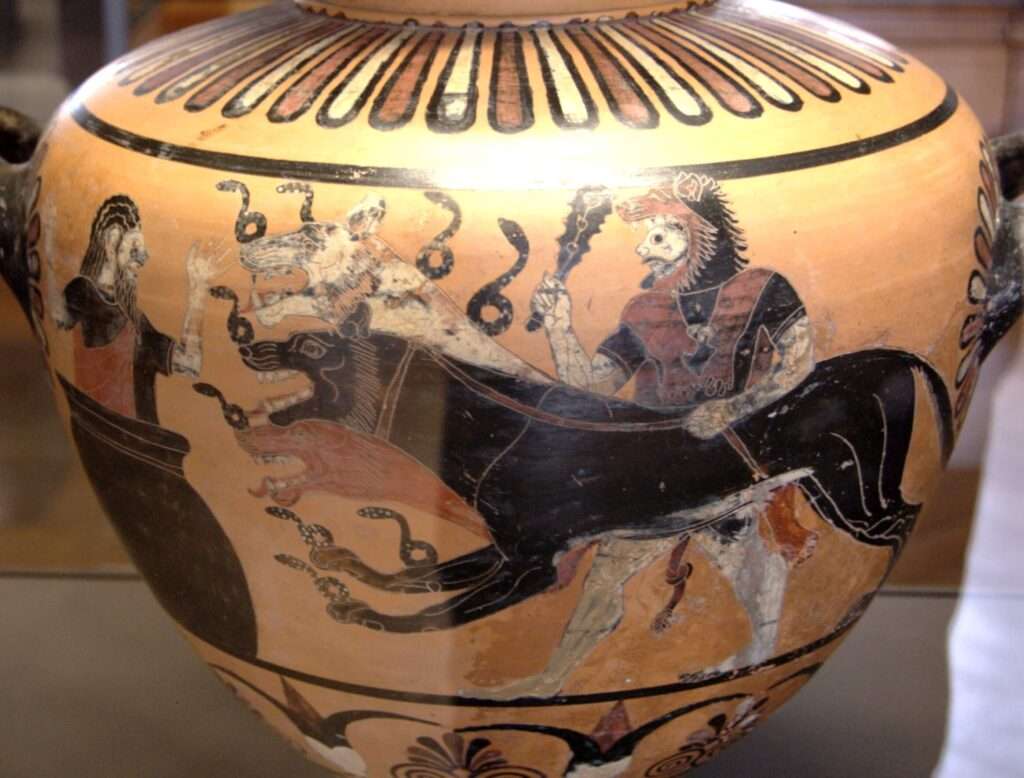
Cerberus in Ancient Texts: Hesiod and Homer
The presence of Cerberus in ancient Greek literature cements his role and significance in the mythological universe. In Hesiod’s “Theogony,” one of the earliest and most comprehensive works on Greek mythology, Cerberus is described with awe-inspiring details, highlighting his fearsome aspects and crucial role as the Underworld’s guardian. Similarly, Homer’s “Iliad,” though offering a more concise mention, acknowledges Cerberus’s place in Greek mythology. These references in such foundational texts not only provide a glimpse into Cerberus’s mythological background but also reflect the ancient Greeks’ intricate beliefs about life, death, and the afterlife. Through these narratives, Cerberus transcends his role as a mere guardian, embodying the Greeks’ complex relationship with the mystical and the unknown.
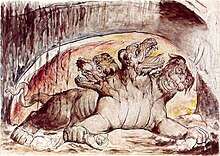
2. Cerberus in Greek Mythology
Cerberus’s Role in Myths: The Underworld’s Gatekeeper
Cerberus, in Greek mythology, is not just a creature of terror but a pivotal figure symbolizing the boundary between life and death. His primary role as the gatekeeper of the Underworld is emphasized in various myths, where he is depicted fiercely guarding the entrance to prevent the dead from escaping and the living from entering uninvited. This role of Cerberus underscores the Greeks’ conceptualization of the afterlife as a separate, inviolable realm, with Cerberus acting as the ultimate enforcer of this cosmic law.
The Labors of Hercules: Cerberus’s Prominent Tale
One of the most famous stories featuring Cerberus is in the context of the Twelve Labors of Hercules. In this myth, Hercules, as part of his penance, is tasked with capturing Cerberus from the Underworld without using any weapons. This daunting task highlights not only Cerberus’s fearsome nature but also the might and cunning required to subdue him. Hercules’ successful retrieval of Cerberus, and his subsequent return, is a testament to the hero’s strength and resilience, but also subtly reinforces the idea that even the mightiest beings must respect the rules set by the gods.
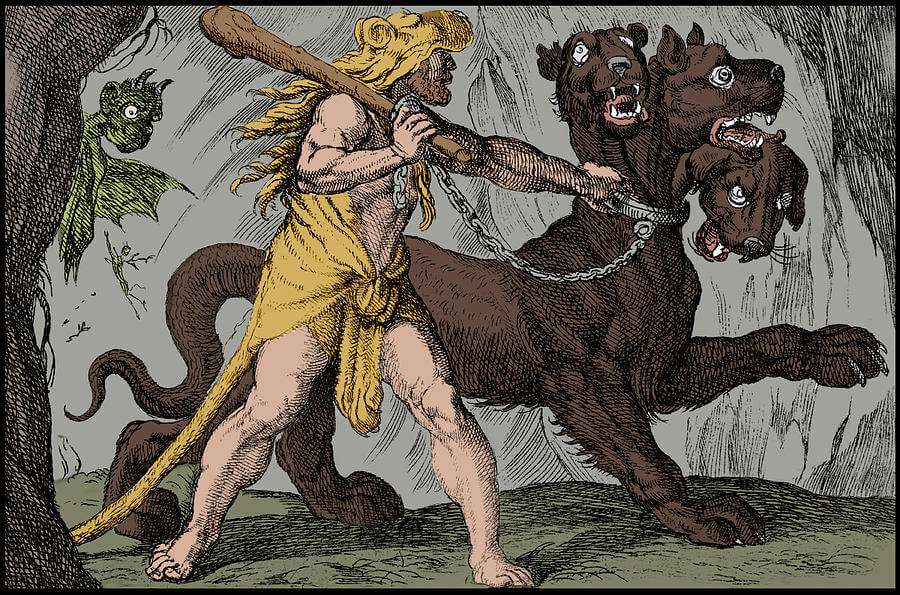
Symbolism of Cerberus: Guarding the Afterlife
Cerberus’s presence in Greek mythology goes beyond physical might; he embodies significant symbolic meanings. As the guardian of the Underworld, Cerberus represents the ultimate transition – from life to death – and the permanence of this transition. His role signifies the Greeks’ understanding of death as a final, irreversible journey. Furthermore, Cerberus’s multiple heads have been interpreted as symbolizing various aspects of this transition – such as past, present, and future, or birth, life, and death – underscoring the multifaceted nature of life and the inevitability of death. Through Cerberus, Greek mythology conveys deep philosophical ideas about mortality, fate, and the nature of the cosmos.
3. Depictions and Symbolism of Cerberus
Cerberus in Ancient Art and Literature
Cerberus’s depiction in ancient Greek art and literature is as varied as it is fascinating. Classical artworks often portray him as a fierce, multi-headed hound with a serpent for a tail, emphasizing his otherworldly and intimidating nature. Ancient Greek literature describes Cerberus’s appearance in a way that tailors it to symbolize his daunting role as the guardian of the Underworld. Vases, sculptures, and frescoes from ancient Greece frequently feature Cerberus, serving not just as artistic subjects but as visual representations of the Greeks’ beliefs about the afterlife and its gatekeeper.
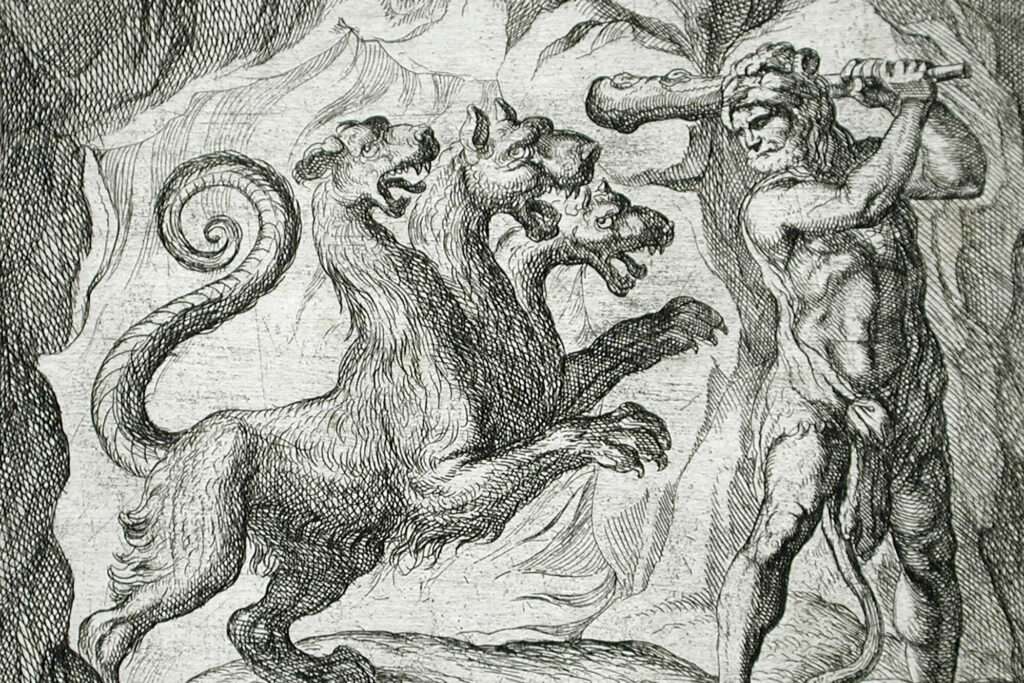
The Evolution of Cerberus’s Image
Over time, the image of Cerberus has evolved, adapting to the changing cultural and religious contexts. Initially depicted with fifty or even a hundred heads in some early texts, his image later standardized to the iconic three-headed beast, perhaps as a simplification for artistic representation or a symbolic concentration of his powers. This evolution in depiction reflects not only artistic preferences but also the shifting perceptions and interpretations of Cerberus’s role in the cosmic order within Greek mythology.
Symbolism of Cerberus
Cerberus’s symbolism extends beyond his physical portrayal, embodying deeper themes related to death, protection, and the afterlife. As a guardian, he represents the boundary between life and death, emphasizing the ancient Greek belief in the sanctity and finality of the afterlife. Interpreters have seen his multiple heads as symbols of vigilance, omnipresence, and the multifaceted nature of death itself. In a broader sense, the Greeks’ understanding of the afterlife as an integral, yet separate part of existence, a realm that is to be respected and feared, has symbolized Cerberus. This portrayal of Cerberus in art and literature encapsulates not just a mythical creature, but a profound emblem of ancient Greek culture’s views on mortality, the soul’s journey, and the mysteries of the afterlife.
4. Cerberus Beyond Greek Mythology
Influence on Later Cultures and Literature
Cerberus’s impact extends far beyond the confines of ancient Greek mythology, permeating various cultures and literary traditions. Throughout the centuries, various literary works, such as Dante Alighieri’s “Inferno,” have depicted Cerberus as a guardian in the third circle of Hell, representing the convergence of classical mythology with Christian motifs. This portrayal and role of Cerberus in Roman mythology were largely adopted from the Greeks, signifying a continuity and shared cultural heritage in the ancient world. This enduring presence in literature reflects Cerberus’s deep-rooted symbolism and the universal human fascination with the mysteries of life, death, and the afterlife.
Cerberus in Modern Media and Popular Culture
In contemporary times, Cerberus has found a place in modern media and popular culture, appearing in movies, television shows, books, and video games. These portrayals often reimagine Cerberus in various forms, sometimes adhering to the traditional three-headed guardian, while other times presenting him in more creative or symbolic ways. This adaptability highlights Cerberus’s versatile symbolism and the timeless appeal of mythological creatures in modern storytelling and entertainment.
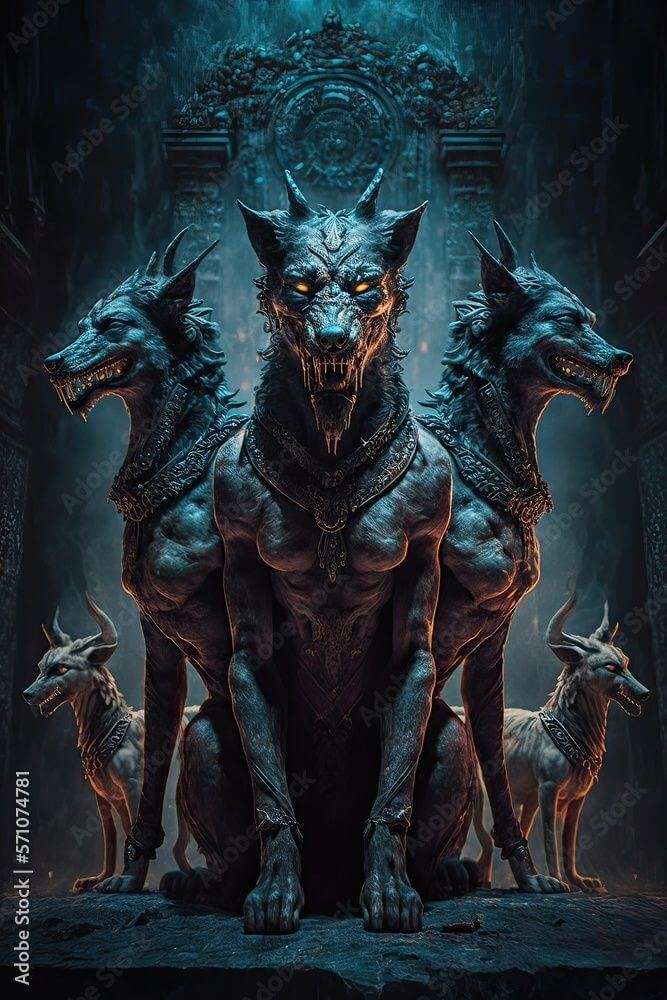
The Enduring Legacy and Relevance of Cerberus
The legacy of Cerberus is a testament to the enduring power of mythology in human culture. Today, Cerberus continues to be a symbol of the unknown, the boundary between life and death, and the concept of vigilant guardianship. His image and story provoke thought about the nature of our existence and the mysteries that lie beyond our mortal understanding. Cerberus’s presence in both historical and modern contexts illustrates the creature’s continued relevance and the lasting impact of Greek mythology on contemporary thought, art, and culture. This enduring legacy underlines the profound influence ancient myths can have on shaping and enriching our understanding of the world and our place within it.
5. The Real-Life Impact of Cerberus’s Myth
Cerberus’s Influence on Greek Culture and Rituals
The myth of Cerberus had a tangible influence on ancient Greek culture and rituals, particularly those related to death and the afterlife. Cerberus, as the guardian of the underworld, became an integral symbol in funerary art and rites.Classical artworks often portray him as a fierce, multi-headed hound with a serpent for a tail, emphasizing his otherworldly and intimidating nature. Ancient Greek literature describes Cerberus’s appearance in a way that tailors it to symbolize his daunting role as the guardian of the Underworld. The myth of Cerberus thus transcended its narrative boundaries, embedding itself deeply in the religious and cultural practices of the Greeks.
Archaeological Findings Related to Cerberus
Archaeological excavations have unearthed various artifacts that showcase Cerberus’s significance in Greek art and culture. Frescoes, sculptures, and pottery pieces depicting Cerberus have been found, particularly in burial sites and sacred places linked to the afterlife. These findings not only affirm the widespread recognition of Cerberus in ancient Greek society but also provide insights into how the Greeks visualized and interacted with this mythological figure. The archaeological evidence underscores the intersection of mythology, art, and daily life in ancient Greece, revealing how myths like that of Cerberus were not just stories but integral parts of the Greeks’ understanding of the world.
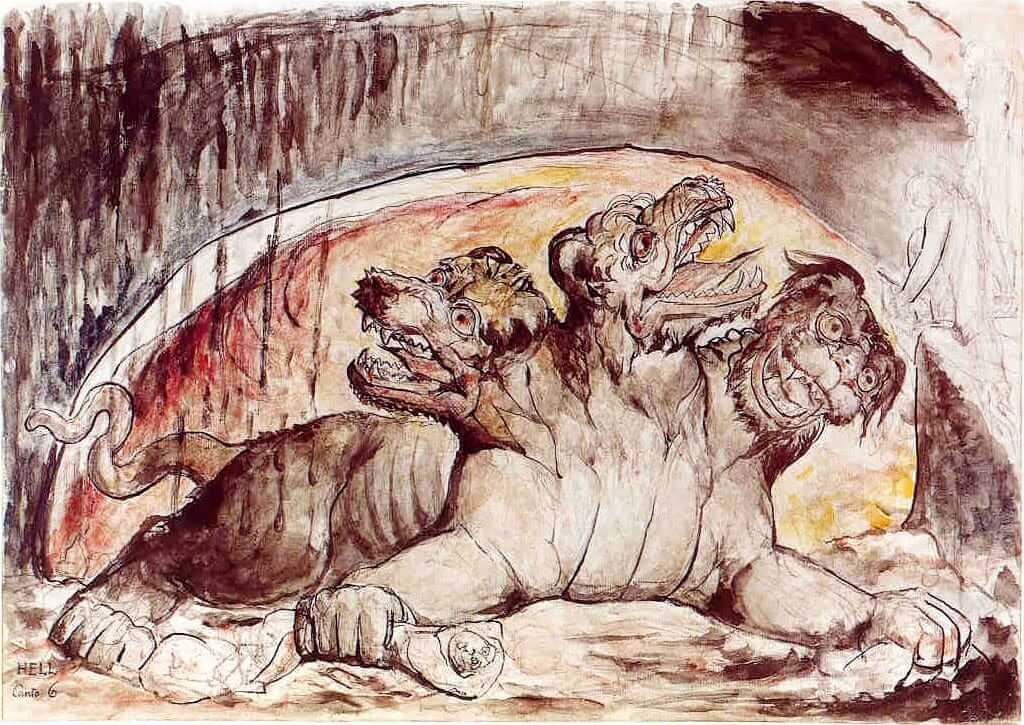
Mythology’s Role in Shaping Cultural and Societal Norms
The enduring myth of Cerberus illustrates how mythology can profoundly influence cultural and societal norms. Myths like Cerberus’s story serve as more than just entertainment or artistic inspiration; they convey deeply held beliefs, values, and understandings about the world. In the case of Cerberus, the myth encapsulates the Greeks’ views on death, the afterlife, and the moral order of the universe. Such myths were instrumental in shaping the ancient Greeks’ perceptions of life and death, influencing their rituals, moral codes, and societal structures. Cerberus’s myth, therefore, represents the power of mythology to not only reflect but also shape the realities of human societies, echoing through time to influence subsequent cultures and generations.
6. Conclusion
Cerberus, the mythical guardian of the Greek Underworld, encapsulates a wealth of symbolism and cultural significance in Greek mythology. From his daunting lineage and role as the Underworld’s gatekeeper to his varied depictions in art and literature, Cerberus embodies the ancient Greeks’ intricate beliefs about the afterlife, mortality, and the moral order of the universe. His enduring legacy in both historical and modern contexts highlights the timeless appeal and relevance of Greek mythology. Cerberus’s story, transcending centuries, continues to captivate and inspire, reflecting the profound impact and enduring fascination of these ancient myths on our understanding of the world, human nature, and the mysteries that lie beyond our mortal realm.
